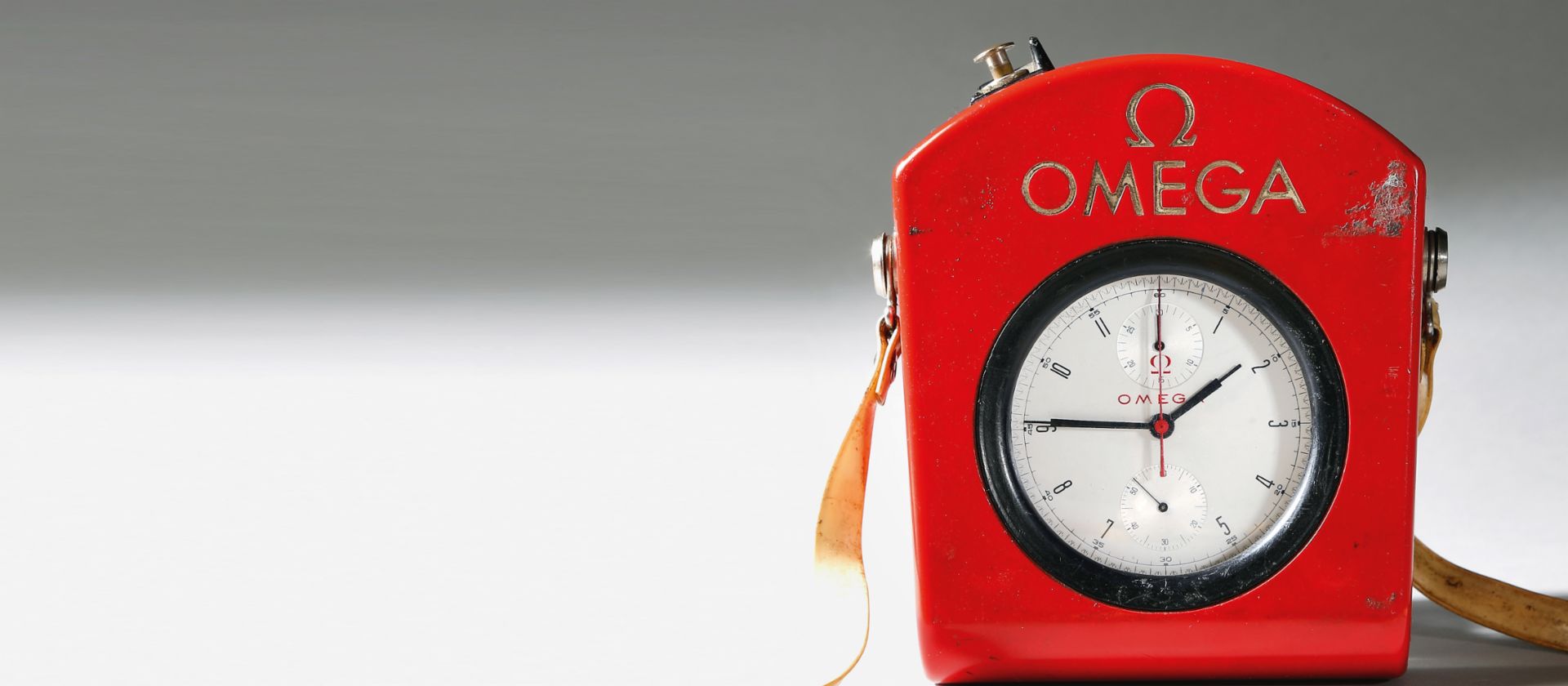ICON
It’s seen better days. The stop mechanism is defective. Its red plastic case scuffed. The plastic ribbon is yellowed and dirty. Yet when the Omega is wound, the second hand on the lower chronograph begins to move with a ticking sound.
As if the stopwatch wanted to tell its story—a moment in motorsport history: the 24 Hours of Le Mans, 1977. The leading Porsche 936/77 Spyder rolls, smoking, into the pit forty-five minutes before the end of the race. The cylinder is damaged. Things get very hectic. Can the Porsche team get the car back on track again? Jürgen Barth fires up the engine twelve minutes before the race ends. It’s running—with one cylinder missing, Barth returns to the racetrack. The 936 manages to hang in there. And it’s still in the lead.
But now precision timing is required. Barth isn’t permitted to cross the finish line before the end of the race at 4 p.m.; otherwise, he’ll have to drive another lap. The crippled Porsche wouldn’t survive that. Barth heads back into the pit, and his teammates improvise: they use adhesive tape to wrap the stopwatch around the steering wheel so that the driver can keep a constant eye on the remaining time. Back on course, Jürgen Barth concludes his final lap—as precisely as Swiss clockwork. The twenty-nine-year-old crosses the finish line at the stroke of four and, together with Jacky Ickx and Hurley Haywood, wins the fourth overall Le Mans victory for Porsche.

